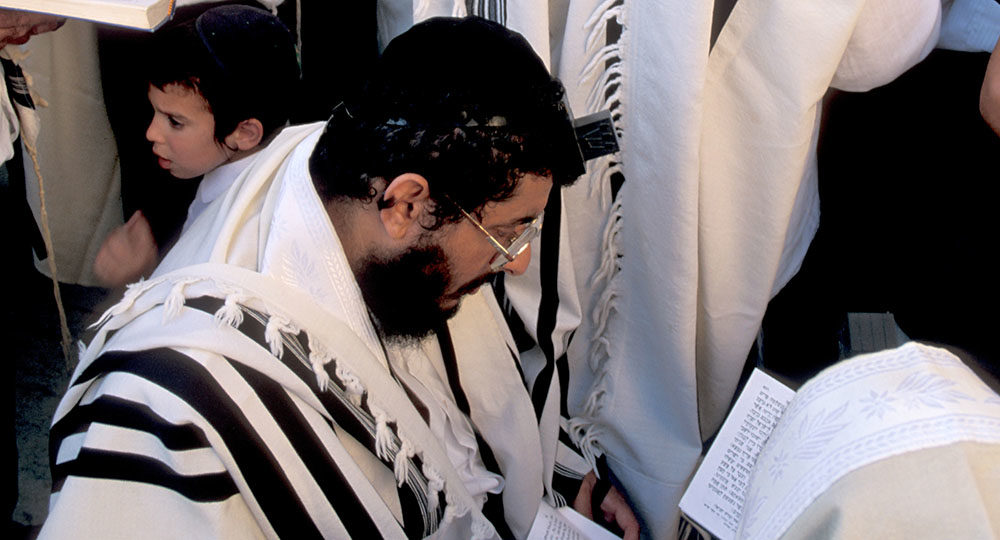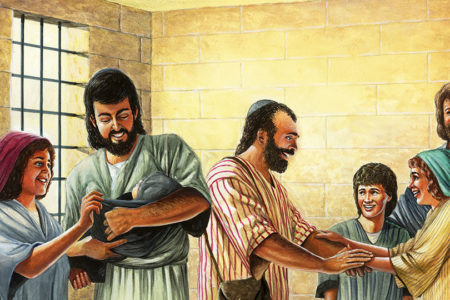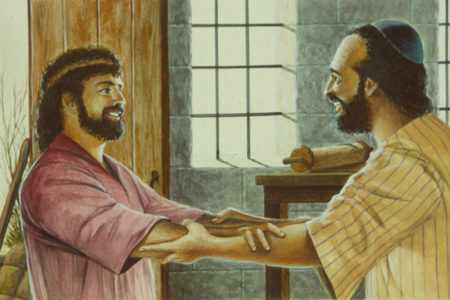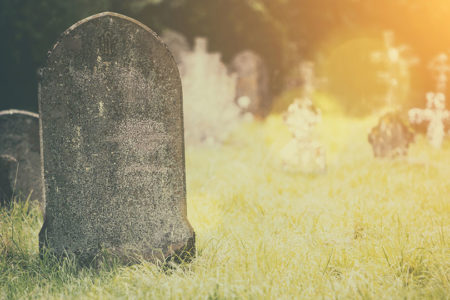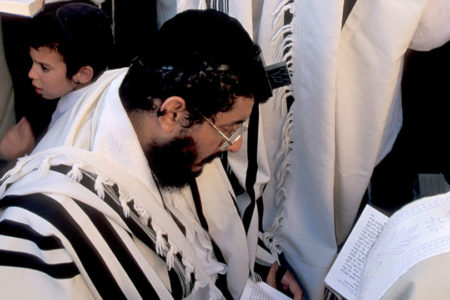Different Jews
The Various Branches of Judaism
HEADLINE ISRAEL:
Messiah Can’t Be Far Off …
Fundamentalist Jews are also interpreting the Gulf War as the catalyst that will hasten their own end-time scenario and their long-awaited Messiah.*
HEADLINE CHICAGO:
Jews Who Don’t Believe in God Gather in Chicago
What should Jewish people do who like bar mitzvahs, rabbis, Jewish weddings, Jewish holiday traditions, Bible stories and songs but do not believe in God? 1) Fake it? 2) Stay at home and sigh? 3) Join a temple with a congregation and a rabbi where no one believes in God?*
These headlines pose quite a contrast. It is important to note that these two groups are the extremes statistically. Only a small percentage of Jews hold either view.* But they do reflect just how difficult it is to explain what Jewish people believe.
Theology, as defined by Webster, is a “rational interpretation of religious faith, practice, and experience.” Christianity has been characterized by systematizing its theology. Books on systematic theology just do not exist in Judaism. Rather than developing a creed or system of belief, Judaism has defined itself more by its practices. Judaism “has no dogma and lacks entirely any formal catechism which all believing Jews would accept … One must abandon absolutes in ritual and in dogma and examine instead the broad philosophy which underlies our faith. What we believe about the Bible, about miracles, about life after death, is secondary to what we believe about human potentialities and our responsibilities toward our fellow men.”*
In ancient times, the Temple in Jerusalem was the common ground to which all Jews gathered to worship God according to His laws. Still, differences in interpretations of those laws did make for diverse groups. We know of the Pharisees, Sadducees, Essenes, Zealots, and people of the land.* When the Temple was destroyed in 70 A.D. and the Jewish people scattered, interpretations of the Word of God became as widespread theologically as the people were geographically. Jews fled to the Far East, India, Ethiopia, Eastern Europe, and other countries along the Mediterranean. Cultural practices began to influence true biblical injunctions.
Volumes have been written to explain, define, or categorize the Jewish people and their beliefs. This article focuses on the most familiar branches of Judaism, the ones into which the majority of the Jewish population fits today.
The Hasidim
No other branch of Judaism is more concerned with doing than Hasidism (pious ones). In all that he does, the Hasid is to joy in God. Ba’al Shem Tov (Master of the Good Name), founder of this movement, believed that there should be joy (simcha) in worship. All beliefs and practices are based on Proverbs 3:6, “In all thy ways acknowledge him.”
Holiness is paramount to the Hasidic Jews. Being separate and fit (kosher) for God are of utmost importance to them. A wife is not fit or kosher to sleep with her husband during her monthly cycle. Food is not kosher unless allowed by the Torah. Clothing is not kosher unless modest. The list seems endless, but the concept of being fit is essential to the understanding of the Hasidim. They separate themselves physically from the rest of the world as well.
The Hasidim live in many of the large cities of the world, but they are best known in the Williamsburg and Crown Heights sections of Brooklyn, New York, and in Mea-Shearim in Jerusalem. These communities are patterned after the shtetls (Jewish villages) of 18th-century Eastern Europe and are completely self-sufficient. There is no need for any exchange with outsiders; these pious ones keep to themselves and their own kind.
Hasidic men wear long beards and dangling earlocks in accordance with God’s command in Leviticus 19:27, “Ye shall not shave around your temples; neither shalt thou mar the corners of thy beard.” They dress in exactly the same manner as their brethren did two hundred years ago: a wide-brimmed hat, black suit, white shirt buttoned at the neck, no necktie. The only exception to this dress is for special occasions such as the Sabbath, weddings, or high holidays, at which times they don great sable-trimmed hats called shtreimels.
The women dress more fashionably but always with extreme modesty. When an Hasidic woman marries, she cuts her hair (or even shaves her head) to show her modesty regarding her husband. Her head will always be covered, however, either with a wig or with a scarf of some kind.
The language spoken in Hasidic households, whether in the United States or Israel, is Yiddish. It is felt that Hebrew is too holy to be spoken and will be used only when the Messiah comes. Until that time, Hebrew is used only in the study of the holy books. The men most highly regarded in this ultra-Orthodox sect are their leaders, the Tzaddiks. This title comes from the Hebrew word meaning righteous. An Hasidic man was once asked who could replace his beloved “Rebbe” upon his death. The man answered, “We don’t like to think about it. Only the Messiah Himself can replace so great a Tzaddik as the Rebbe.”*
The Hasidim fervently believe in the coming of the Messiah. Their Messiah will not be a deity, but, rather, a man empowered by God to bring peace to His people. Commitment to the Law, both written and oral, performing mitzvot (good deeds), and assurance of an afterlife are basic beliefs of the Hasidim.
The Orthodox Tradition
Orthodox Jews share many common beliefs and practices with the Hasidim. They hold the Halakha (the Law) in high regard; they see the written and oral Law as binding; they believe that any problem facing them can be solved in the teaching of the Law; there is a strong emphasis on religious training for the children; the Sabbath is strictly observed; dietary laws are kept. And, like the Hasidim, the Orthodox look for a powerful, personal Messiah who will come to right the wrongs that have been perpetrated over the years.
The major difference between the Orthodox and the Hasidim is in their lifestyles. To these traditional Jews, commitment to their belief does not mean total separation from the world. In what circumstances is a Jew defiled? To the Orthodox there is no defilement in wearing modern-day clothes, provided that they are modest. Working outside of the Jewish community is acceptable. The Rebbe is not the final authority. Although the Orthodox have great respect for scholarship, they are not as enthralled with the somewhat mystic elements found in Hasidism. For the Orthodox Jew, there is no defilement in independent thinking, as long as it remains within the bounds of general tradition.
To use a phrase more familiar in Christian terminology, the Orthodox Jew feels he should be in the world but not of the world.
The Reform of Liberal Tradition
In his book What the Jews Believe, Rabbi Bernstein alluded to the noted scientist Albert Einstein. He said, “Although not observant of formal religion, [Einstein] is profoundly Jewish in his religious outlook.”* He quoted Einstein as saying “It is enough for me to contemplate the mystery of conscious life perpetuating itself through all eternity, to reflect upon the marvelous structure of the universe which we dimly perceive … ”*
If we are to understand the Reform Jew, we must understand two features of this quotation: (1) the intellect of Einstein (Reform Jews value the intellect, the pursuit of knowledge to explain our world); and (2) the statement “It is enough for me,” which characterizes the independent, freethinking Jew. The Reform Jew thinks and acts independently of the written revelation of God because, for him, this revelation is, in fact, not from God but from men.
Reform Judaism “believes in progressive revelation and takes into account changes brought about through history.”* Neither the Tenach (Bible) nor the Talmud (oral Law) is binding. Men and women worship together, in colloquial language, complete with choir and organ.
Founded in 19th-century Germany, Reform Judaism is, for many Jews, the middle ground between assimilation and what they see as Jewish fanaticism. Because of the strong commitment to education and the emphasis on the intellectual, the Reform movement has encouraged, if not insisted upon, scientific logic to explain the world. Creation, miracles, and a personal Messiah are replaced with evolution, logic, and a messianic era brought about by man. Judaism that is true to the Torah looks for a future resurrection; Reform Judaism sees it as a time when man will awake to realize his potential. The Torah-believing Jew practices his Judaism according to the Torah; the Reform Jew is more interested in working out his or her Jewishness in a Gentile world.
The Conservative Tradition
Conservatism is the middle ground. The Conservative Jew thinks in a way similar to his Reform brother, but he has a strong desire to maintain his Yiddishkeit (Jewishness) in worship and family life. In almost every aspect of Jewish life, the Conservative lives a compromise between the Orthodox and Reform traditions. Worship in a Conservative synagogue is conducted half in Hebrew and half in colloquial language. Many Conservatives keep kosher at home but not necessarily in a restaurant or in someone else’s home.
The goal of the Conservative Jew is to carry on as much Jewish tradition as possible, maintain Jewish solidarity, and yet not have to fashion his life around the beliefs and rituals of his more observant brothers.
Reconstructionism
“Both the idea and the movement owe their inspiration to Mordecai Menahem Kaplan.”* For Kaplan, Judaism evolves. It is a system that must change with the culture in which it lives. In 1935 the magazine Reconstructionist was published using many of Kaplan’s ideas. The concept of Jewish Law was replaced with Jewish guidelines. A new prayer book was written, eliminating many traditional prayers and ideas. At the heart of this movement is not the person of God but, rather, the sociological reality of Judaism. The survival of the practice of being a Jew is very important. Jewish identity must be maintained, although achieving this is left to the individual, within very loose parameters.
A word should be said about two other groups. The first is the Zionists. Zionism is not a branch of Judaism. A person can be a Zionist whether or not he is Jewish. Nor are all Jews Zionists. To be a Zionist, one must believe that the Jews have a right to a homeland called Israel situated in its ancient location. Hasidic Jews are not Zionists because they believe that Israel will be established as a nation only when the Messiah comes to establish His Kingdom there. Many Bible-believing Christians are Zionists because of their strong agreement with God’s Word. God is a Zionist.
There are also those who do not concur with the Bible but who see Zionism as racist. The United Nations came to that conclusion some years ago. Still others see Zionism as some offbeat radical group.
Zionism was conceived by Theodor Herzl almost one hundred years ago. It was born in 1948 with the founding and recognition of the State of Israel. It has since grown from infancy and childhood into its teen years, and it will come to full maturity when the Messiah Himself, the Lord Jesus, returns to the Mount of Olives to set up His Kingdom in His land.
There remains yet another group of Jewish people who do not fit into the other existing branches of Judaism. These are the Hebrew Christians, also called completed Jews or Jewish believers. If a person is born Jewish (that is, a descendant of Abraham), he will die Jewish. Nothing can change that. What he believes may, however, change. Any person who receives Jesus as his Messiah becomes a new creation in his heart. A believing Jew can never go back to what he was, nor should he want to. In Christ, he has become a part of a body, a family of fellow believers whose head is Christ Himself.
Each of the groups we have looked at is sincere in its own beliefs and practices. Each of the traditional branches of Judaism tries to reach and/or please God in its own ways, most of which are inconsistent with the Word that God Himself gave to them. But the greatest Jew who ever lived did something none of us could ever do. He fulfilled the Law and became the perfect sacrifice for the evil brought into this world. Jewish Christians have the best of both worlds: the rich heritage, “the glory, and the covenants, and the giving of the law, and … promises” (Rom. 9:4), and the fulfillment of those promises, the Messiah Himself, Jesus our Lord.
